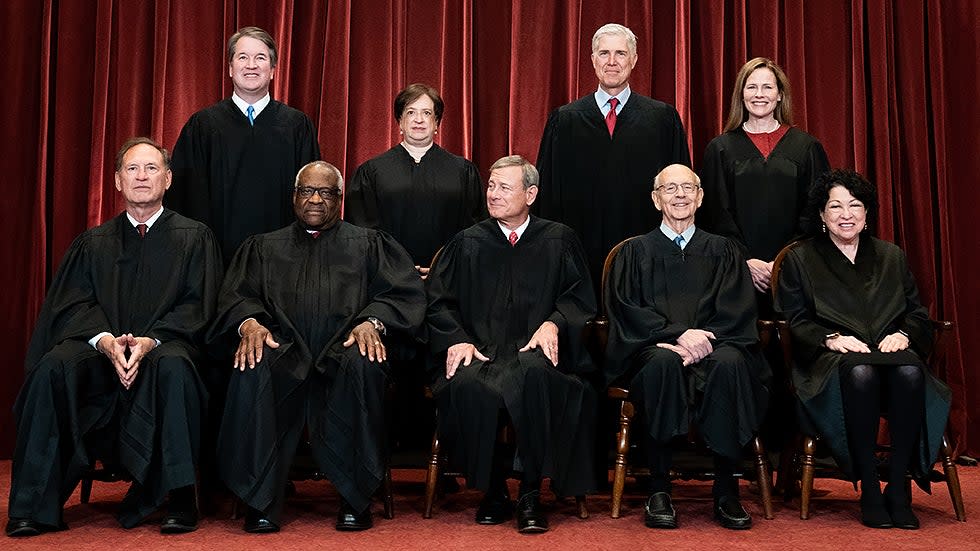The Supreme Court's criminal justice blind spot

A primary role of the Supreme Court is to resolve differences among the federal appeals courts when those courts reach different conclusions on the same questions of law. But for 30 years, the Supreme Court has refused to perform this essential role when the disagreements concern federal sentencing guidelines. The court's inaction has allowed uncertainty and disparities to fester in this critical area of criminal justice.
When federal judges impose sentences, they must use federal sentencing guidelines as the starting point for their decisions. The guidelines set forth national norms on sentencing factors and penalty levels, and thus promote uniformity in sentencing. Since the guidelines were promulgated in 1987, more than 1.9 million individuals have been sentenced under them. With so many sentencing determinations being made across the country, disagreements among the courts about the meaning of guideline provisions are bound to occur.
The Supreme Court's abdication followed one such disagreement. The guidelines provide that, if a defendant admits to certain facts that establish he or she actually committed a more serious offense, a judge can impose a more stringent sentence corresponding with the more serious offense. The dispute among the lower courts was whether such a stipulation must be contained in a formal plea agreement.
The justices took the case to resolve the conflict. As it turns out, the federal agency responsible for developing and revising sentencing guidelines, the U.S. Sentencing Commission, was in the middle of amending the same guideline that gave rise to the conflict.
In its 1991 opinion, the court held that, regardless of whether the stipulation had to be in the form of a plea agreement, the substance of the stipulation did not establish a higher offense. The court sidestepped the conflict, leaving the commission's amendment process uninterrupted. Unfortunately, the court added extraneous language to its opinion, writing that because the commission possessed authority to amend the guidelines in response to interpretive conflicts, the court should be "more restrained and circumspect in ... resolving such conflicts."
Because this language was unnecessary to the disposition of the case, it should have no precedential weight. At most, this case supports the unremarkable proposition that, when the commission's amendment process is under way regarding a guideline that triggers a judicial conflict, the court should exercise restraint and allow the commission to complete its amendment process. The court regularly abstains from interfering with parallel administrative or state proceedings. Deferring to the commission during the course of a simultaneous amendment process would be consistent with this respect for alternative decisional bodies.
The problem, however, is that the court has refused to hear all guideline conflicts, not just those the commission is actively addressing. In adopting this broad position, the court has ceded its role of ironing out judicial conflicts to the commission.
As then-Justice Samuel Alito recognized, "No other federal agency - in any branch - has ever performed a role anything like it." Indeed, the court does not forgo consideration of a case when Congress or an administrative agency may one day amend a statute or regulation producing a conflict.
This anomaly has real-life consequences. This year, Justices Neil Gorsuch and Sonia Sotomayor believed that the court should not hear a sentencing guidelines case, notwithstanding the fact that it raised an "important and longstanding split" among the federal appeals courts. They reasoned that the commission should "address the issue in the first instance." But the justices conceded that until the commission resolves the split, "similarly situated defendants may receive substantially different sentences depending on the jurisdiction in which they are sentenced," with the disparities ranging by a factor of "years" and spanning from a "fixed-term" to a "life sentence."
This knowingly perpetuated uncertainty and disparity in the federal courts. To make matters worse, the court did so knowing that the commission has been without a quorum for almost three years. As such, the court punted a conflict to an agency incapable of amending the guidelines or resolving conflicts. This isn't the first time the commission has lacked a quorum for a significant period.
Even when the commission is fully functional, it only has the capacity to take on some of the conflicts that exist. This is not to disparage the commission but to call into question the Supreme Court's hoisting the responsibility of addressing guideline conflicts onto the shoulders of a regularly shorthanded commission.
Anyone interested in coherence and consistency in criminal justice should be troubled by the court's refusal to review conflicts involving the federal sentencing guidelines. It is one thing to be discerning in case selection; it is another to step aside altogether from guideline cases that implicate the fair and uniform administration of justice.
Dawinder "Dave" S. Sidhu is assistant professor of law at the University of New Mexico and has held positions at Oxford University Faculty of Law, Georgetown University Law Center, Harvard University's Pluralism Project, the University of Baltimore School of Law, the U.S. Supreme Court and the U.S. Department of Education's Office for Civil Rights.

